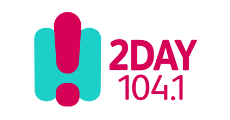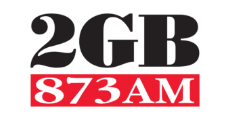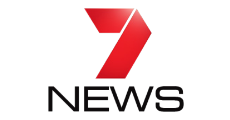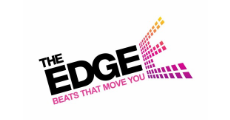LIPOSUCTION AND LIPOSCULPTURE: INDICATIONS, PRE-OP AND POST-OP CARE
Liposuction is the core procedure for body contour surgeons. Liposuction has evolved progressively and at times dramatically over the past three decades. Techniques have been honed and instrumentation expanded to meet the demands of the patient and surgeon for more precise fat sculpting, more refined results, less morbidity, downtime and fewer complications. Non-invasive fat sculpting tools have also been developed to reduce even further, the morbidity of more invasive, traditional techniques or even avert the need for surgery or touch up surgical procedures.
No matter which instruments or techniques are used, a thorough knowledge of the aesthetic and morbid anatomy of the area to be re-shaped, is essential for a safe, reliable and attractive result. The aesthetics of each particular area need to be understood prior to and during the design and marking for the procedure.
The indications for and limitations of the results need to be appreciated. Patients’ expectations need to be assessed prior to embarking on liposculpture as results are not always predictable or comply with the patients’ needs. Complications in the intra-operative and immediate post-operative period, can be reduced by astute patient selection and following aspiration guidelines and avoiding prolonged operative time.
Indications for Liposuction/Liposculpture
The optimal patient is one who has had a diet and exercise regime, successfully completed but still has areas of fatty accumulation – in men, usually in the abdomen, “man-boobs” and “love handles” areas and in women, usually the outer thighs, inner thighs and hips. It is generally accepted that large volume liposuction is anything over 5,000 cc of fat removal and that greater volumes of aspiration are associated with increasing complication rates.
A history of deep venous thrombosis (DVT), especially during pregnancy, long airline flights or a history of blood dysplasias, should be sought. As in any medical history, the patient’s prescription medications including anti thrombotic medications, allergies, tobacco use, recreational drugs and herbal medications’ intake should be obtained. If patients are taking anti-anxiety medications or psychotropic medications, whether to carry on taking these medications or to desist from them, needs to be discussed with the anaesthetist if the patient is to proceed with the surgery.
Physical Examination
I examine the patient, in their underwear, to examine the whole figure of a woman and in a man, examine his whole torso and discuss with both the potential improvement that can be achieved with liposuction alone. The examination for each aesthetic area, includes the evaluation of how fat is contributing to the distortion of the shape. Patients who have a history of exercise or sports and good muscularity as well as good skeletal axial proportions, are generally better candidates for the procedure, than those patients with poor skeletal proportions and flaccid muscularity.
Not only should the areas of fat be observed, palpated, pointed out to the patient in the examination, but patients should also have their skin elasticity assessed visually and by pinch. Patients with excessively aged skin, secondary to sun exposure or has stretch marks either from weight gain, weight loss or pregnancy, have to realize that there are limitations in their expectations of result based on the quality of their skin. Patients who have had multiple pregnancies with loose, lax abdominal skin and diastasis recti, are generally not good candidates for liposuction and an abdominoplasty or resective body contour procedure is more likely to be suggested in this type of patient.
In examining the back, any asymmetries can be pointed out; a mild scoliosis is quite common for example. In examining the abdomen, an assessment of whether there are associated abdominal hernias or periumbilical hernias may be done. In patients with prior abdominal incisional scars, an abdominal ultrasound or CAT scan might be necessary to clarify whether hernias are present if clinical examination is indeterminate.
Pre-Operative Marking
The expected contours are drawn in on the body and a squeeze contour map of the height of the bulges of fat. A squeeze contour map is made using semi-permanent, different colour markers. Any divots as well as cellulite and zones of adherence will be marked with a different coloured texta during the marking process prior to the surgery. Patients may inquire about where the incisions are and how many incisions there will be; these are pointed out to the patient and those that cannot be placed in a crease are as much as possible placed in the line of underwear or swimwear. Patients are often surprised in the three way mirror and after the drawings, that asymmetries do exist and the asymmetries when due to skeleton or muscular asymmetries, will not be improved by the liposuction procedure.
Dressings, Compression and Postoperative Management
After closure of all the access ports with an absorbable suture, a gauze dressing and Tegaderm are applied. There will be some fluid leakage from the incisions overnight. A compressive garment is applied by the nursing staff on the operating table and the patient is transferred to the recovery room. Analgesia will be needed and the patient will be instructed to take oral medications which are individualised to the patient’s needs.
If the patient is an overnight stay at the hospital, the patient is reviewed in the clinic in the morning and the dressings are changed. The patients remove their garment to shower and reapply the dressings on a daily basis, after which a garment is again returned and worn again. Garments can be a special order but those commercially available such as SPANX are also suitable for the majority of patients. Most patients tolerate the garments well but are pleased to be relieved of them by 6 weeks. They usually wear them continuously for 2 weeks and taper off their wearing of them over the next few weeks.
Early Complications
Haematoma and infection are rare but tragic cases of skin necrosis have been reported. Venous thrombosis and pulmonary embolism are an ever present danger which should be anticipated in thrombosis prone patients. Screening, by history examination and laboratory testing should identify patients who are particularly prone and consideration should be given not only to calf compression, calf stockings and early ambulation but also a low dose heparin subcutaneously in the post-operative period for those patients deemed high risk.
An episode of tachycardia or difficulty breathing are other classical signs of a pulmonary embolus with a subtle elevation of temperature, malaise or failure to progress all might suggest a pulmonary embolus. Shortness of breath in the immediate post-operative period might also indicate fluid overload or an iatrogenic pneumothorax. If the patient is deteriorating, transfer to a major hospital with emergency room and intensive care facilities, must be considered and expedited with alacrity.
A patient presenting with an acutely painful abdomen after abdominal liposuction may need an emergency laparotomy and bowel repair. These cases maybe followed by significant infection of the abdominal wall resulting in necrosis and requiring extensive debridement and reconstruction. A fatal outcome could be the result of such a horrific complication. High index of suspicion and expedited general surgical intervention is vital. Hypotension in the post-operative period, could be due to excessive blood loss. Knowing the pre-operative haemoglobin and carefully assessing blood loss in the aspirate, should indicate where the blood transfusion might be needed. Post-operative blood work should be ascertained to assess if the haemocrit has fallen and the patient may require blood transfusion. Plasma expanders as a volume substitute, may be sufficient in a hypotensive patient or be expedient prior to transfusion, although such a sequel is very rare.
Seroma formation in areas of firmness and deep tissue induration or infections, can occur and this necessitates the careful monitoring of patients in the immediate post-operative period. Aspiration of seroma and antibiotic coverage for collections if present, are indicated.
Necrosis/toxic shock syndrome are fortunately rare, but an awareness of them and a rapid response, referral to an emergency department, in particular to an infectious disease consultant and debridement are the likely sequelae to prevent progression and a possible fatal complication. The most common problem in the first few weeks post-operatively, is swelling and bruising and small seroma collections which might require needle aspiration. Referral to a physiotherapist for lymph drainage and/or ultrasound and massage is often very helpful physically and psychologically.
Late Complications
Contour irregularities are less common with experience by the surgeon but if certain areas do not resolve, where the skin is quite adherent in the lateral thigh, posterior thigh or in the medial thigh; secondary liposuction and/or lipofilling maybe needed to correct such irregularities. Usually surgeons rely on time, massage and exercise to smooth out these contour irregularities. Lack of skin contraction and loose redundant skin, may require secondary skin resection and lifting procedures, usually not until 9 to 12 months after the liposuction, to facilitate maximum skin retraction and tissue resolution.
Numbness and parasthaesia can occur in any area; however, the hips and arms are quite prone to this annoying sequelae. The numbness and paraesthesiae are usually self-limiting within two to three months.
Results and Secondary Procedures
Post-operative results are usually photographed six months after the procedure when the patient has resumed all their normal activities. A good result in good candidates of a male’s abdomen as well as a female in the typical area, namely the hips, thighs and buttocks are shown.
Touch-up procedures should be delayed for 6 or more after the initial procedure. Weight gain should be checked in the post-operative period, to ascertain if fat is residual or newly acquired. Irregularity might require lipofilling, and is available as the best remedial option if a patient’s results can be realistically improved.
Certain areas, especially the buttock can sag after liposuction and the “banana roll” is prone to being over-resected. A “hanging” buttock is “ageing” and might require skin excision, although the scar after excision is undesirable for most patients. Surgical wedge excision is the only acceptable alternative for improvement in some of these patients, however, and the scarring and downside of this surgery, may well convince a patient to be satisfied with the improvement in their shape as well as being able to accept some degree of looseness of their skin.
Summary
In a woman, the creation of smooth and well-defined curves will always improve their figure. As surgeons, we aim to improve the shape of our patients, however, the results of our efforts are closely linked to the expectations of each patient being realistic rather than unrealisable. In a male, a more angular and muscular shape is sought, paying attention to the definition of abdominal and chest wall muscularity.
The improvement of patients’ shapes and figures generally makes patients feel more comfortable about themselves, enabling more versatility wearing different clothes lines, sporting fashions and/or swimwear. Liposuction has established itself as the most valuable body contouring plastic surgical procedure available and the demand for it is not abating. Improved equipment and anaesthetic techniques have facilitated better and upgraded results since the inception of this technique, 30 years ago.
Gallery














